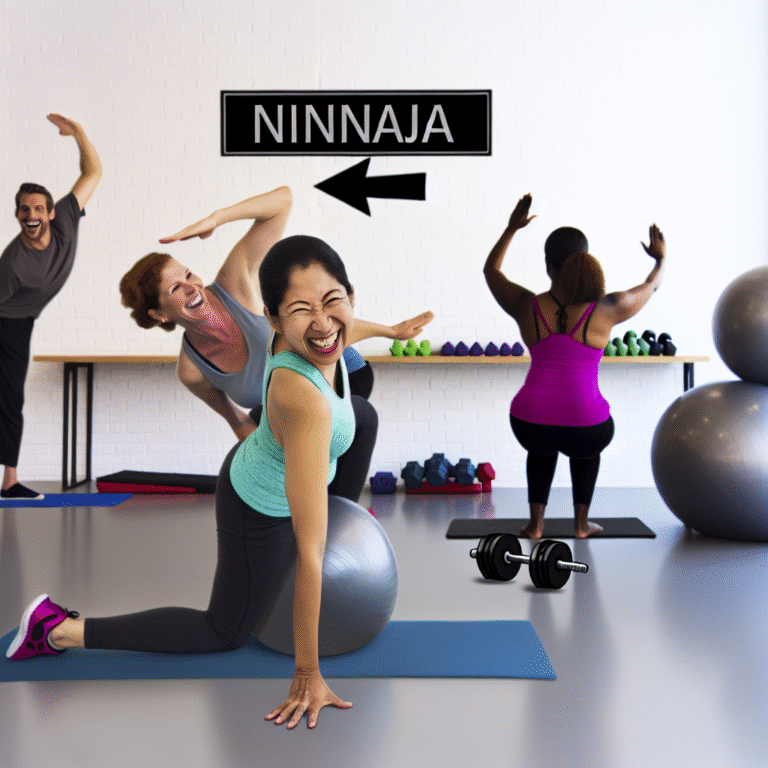Rebuilding Fitness with Back Pain: Your Guide to Thriving, Not Just Surviving
Quick Summary:
- Adjust and Adapt: When battling back pain, modifying your fitness approach is key—think light weights instead of long walks.
- Stay in Motion: Small, manageable movements can keep your heart rate up while avoiding excess strain on your back.
- Embrace Variety: Explore different strength training routines and low-impact activities to amplify your fitness without the pain.
Hey there, my friend! So, you’re dealing with some back pain and looking to get back on that fitness train, huh? Trust me, you’re not alone! Many people face the frustrating challenge of trying to stay fit when their bodies throw a wrench in the works. You’ve got the desire to get moving but navigating the guidelines can feel like a labyrinth.
Fear not! Let’s dive into some real talk about how to build your fitness back up without making your back scream in protest. Grab a comfy seat, maybe a nice warm drink (or a sturdy water bottle), and let’s unravel some simple yet effective tips that can guide you through this journey.
Understanding Back Pain and Its Limitations
First off, let’s break down what you might be dealing with. Back pain can stem from various causes— injuries, prolonged sitting, bad posture, or even just the wear and tear of life. Studies show that around 80% of adults experience some form of back pain in their lifetime. Yes, you heard that right, it’s not just you!
Common Types of Back Pain:
- Acute Pain: Short-lived but could be intense. Often arises after a specific activity or incident.
- Chronic Pain: Lasts for three months or more. It can be a constant thorn in your side.
- Neuropathic Pain: Related to nerve issues, might cause tingling or numbness.
Begin with Awareness: Listen to Your Body
Before diving into any fitness routine, it’s crucial to understand your body’s limits. Have you ever tried to ignore that little nagging voice telling you, "Hey, maybe that’s too much"? Spoiler alert: it usually doesn’t end well. You want to respect your body and give it the grace it deserves.
Here are some tips to help you gauge your body before jumping in:
- Assess your pain levels: Are certain movements more painful than others?
- Identify your triggers: Is it sitting for too long or activities that involve twisting?
- Keep a journal: Track what feels good and what doesn’t. This helps in strategizing your next steps.
The Power of Weight Training
So you’re thinking of using weights—awesome choice! Did you know that strength training can drastically improve your overall fitness while also lending support to your back? According to several studies, individuals who engage regularly in strength training report decreased back pain and increased functional capabilities.
Benefits of Weight Training with Back Pain:
- Strengthens core muscles: A strong core can help stabilize your spine.
- Improves posture: Better posture can alleviate pressure on your back.
- Enhances bone density: Stronger bones can help prevent future injuries.
Choosing the Right Weights for You
Here’s where it gets even more interesting. You don’t need heavy weights to reap the benefits of strength training. In fact, starting light is often recommended for anyone with back issues.
Suggestions for Weights:
- Resistance bands: Low impact and versatile for various exercises.
- Dumbbells: Lightweight options can work wonders for toning.
- Bodyweight exercises: Yes, you heard that right! Sometimes your own weight is enough.
Sample Weight Training Exercises
Let’s get into some specific movements that can bolster your fitness without adding strain. Pick a few of these to mix into your routine a few times a week!
1. Modified Deadlifts
- Stand with feet shoulder-width apart.
- Hold weights or use just your body.
- Stand tall and hinge at the hips, pushing your butt back while keeping your spine neutral (no rounding!).
2. Seated Dumbbell Press
- Sit comfortably with back support (this is crucial).
- Hold light dumbbells at shoulder height and press upwards.
- Remember: keep your core engaged!
3. Glute Bridges
- Lie on your back with knees bent and feet flat.
- Lift your hips towards the ceiling while squeezing your glutes.
- Hold briefly before lowering back down.
Flexibility Matters
Flexible muscles are happy muscles. Adding gentle stretching can help relieve tension and improve mobility without straining your back. Here are some gentle stretches you can try:
- Cat-Cow Stretch: A gentle way to mobilize your spine.
- Child’s Pose: Great for gently stretching the back muscles.
- Seated Forward Bend: Helps in elongating the spine and relieving tension.
Low-Impact Cardio to Consider
Now you might be wondering, “What about cardio?” If typical cardio activities, like jogging or cycling, feel like a no-go, don’t despair! There are plenty of low-impact alternatives you can integrate into your routine:
- Swimming: A powerful full-body workout that feels good on your joints and back.
- Elliptical Machines: If you have access, these provide a gentle way to get your heart rate up without the jarring impact.
Implementing a Balanced Routine
So now you have some movements under your belt, but how do you piece it all together? It’s like creating a beautiful meal; you want balance and variety! Here’s a simple structure:
| Weekly Fitness Plan Structure: | Day | Activity | Duration |
|---|---|---|---|
| Monday | Weight Training (Upper Body) | 30 mins | |
| Tuesday | Gentle Yoga or Stretching | 30 mins | |
| Wednesday | Weight Training (Lower Body) | 30 mins | |
| Thursday | Low-Impact Cardio (Swimming or Elliptical) | 20-30 mins | |
| Friday | Weight Training (Core & Stability) | 30 mins | |
| Saturday | Rest Day or Leisure Walk | If comfortable | |
| Sunday | Flexibility Training | 20-30 mins |
Nutrition Matters Too!
Can we talk about food? Fueling yourself right is an unsung hero in the fitness journey, especially when dealing with pain. Anti-inflammatory foods can work wonders in helping manage your discomfort. Consider incorporating:
- Fruits & Veggies: Berries, leafy greens, and citrus are all anti-inflammatory.
- Omega-3 Fatty Acids: Think salmon, chia seeds, and walnuts.
- Whole Grains: Oats and quinoa for energy without drastic spikes.
The Importance of Mindset
Finally, a huge part of building fitness when dealing with back pain revolves around your mindset. Consider adaptive strategies that promote a positive approach:
- Be patient: Rome wasn’t built in a day, nor will your fitness plateau vanish overnight.
- Celebrate small wins: Did you do an extra set? High five to you! Small victories pave the way for bigger ones.
- Get a buddy: Sometimes, it helps to have someone along for the ride.
Conclusion: Your Journey, Your Pace
Building your fitness back while managing back pain is a journey, not a sprint. Use the tools at your disposal, be kind to yourself, and remember: it’s totally okay to ask for help, be it from fitness professionals, loved ones, or a supportive community. This is a new chapter in your health, and you’re more than equipped with the knowledge to conquer it step by step.
You’ve got this! Now get out there, lift those weights, stretch that back, and rock your gradual return to fitness like the warrior you are!





